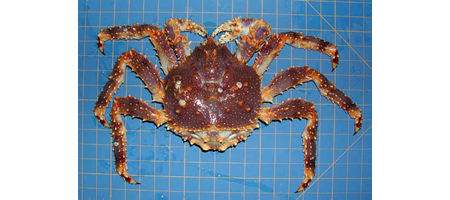“It’s like a scene out of a sci-fi movie,” says the team – millions of king crabs marching up from the deep waters of the Antarctic to conquer territory they haven’t visited for hundreds of thousands of years.

The shell-crushing crabs have trouble regulating their body chemistry at low temperatures, keeping them away from the Antarctic in the past. But something seems to have changed – and it could have big implications for what is already a very fragile ecosystem.
Antarctic clams, snails and brittle stars, because of adaptation to their environment, have soft shells and have never had to fight shell-crushing predators. “You can take an Antarctic clam and crush it with your hands,” says professor James McClintock of the University of Alabama.
And this loss of unique mollusks could jeopardize organisms with disease-fighting compounds, says McClintock, such as sea squirts, whicih produce an agent that fights skin cancer.
“I am very concerned that species could disappear, and we could lose a cure to a disease,” he says.
The first signs of the invation were noticed in 2007, when Sven Thatje of the University of Southampton saw a lone pioneer climbing up the slope. Earlier this year, a systematic search was launched.
“We ran transects up the slope and discovered hundreds and hundreds of king crabs, which could translate into millions across broad expanses of coastal Antarctica,” says Thatje. “They are adults, males and females. They appear healthy and have all the ingredients needed to produce a healthy population.”
The team believes ths phenomenon is linked to human-induced climate warming.
TThe whole ecosystem could change,” says McClintock. “And this is just one example of a species expanding its range into a new territory. There will certainly be more as the climate warms up.”






